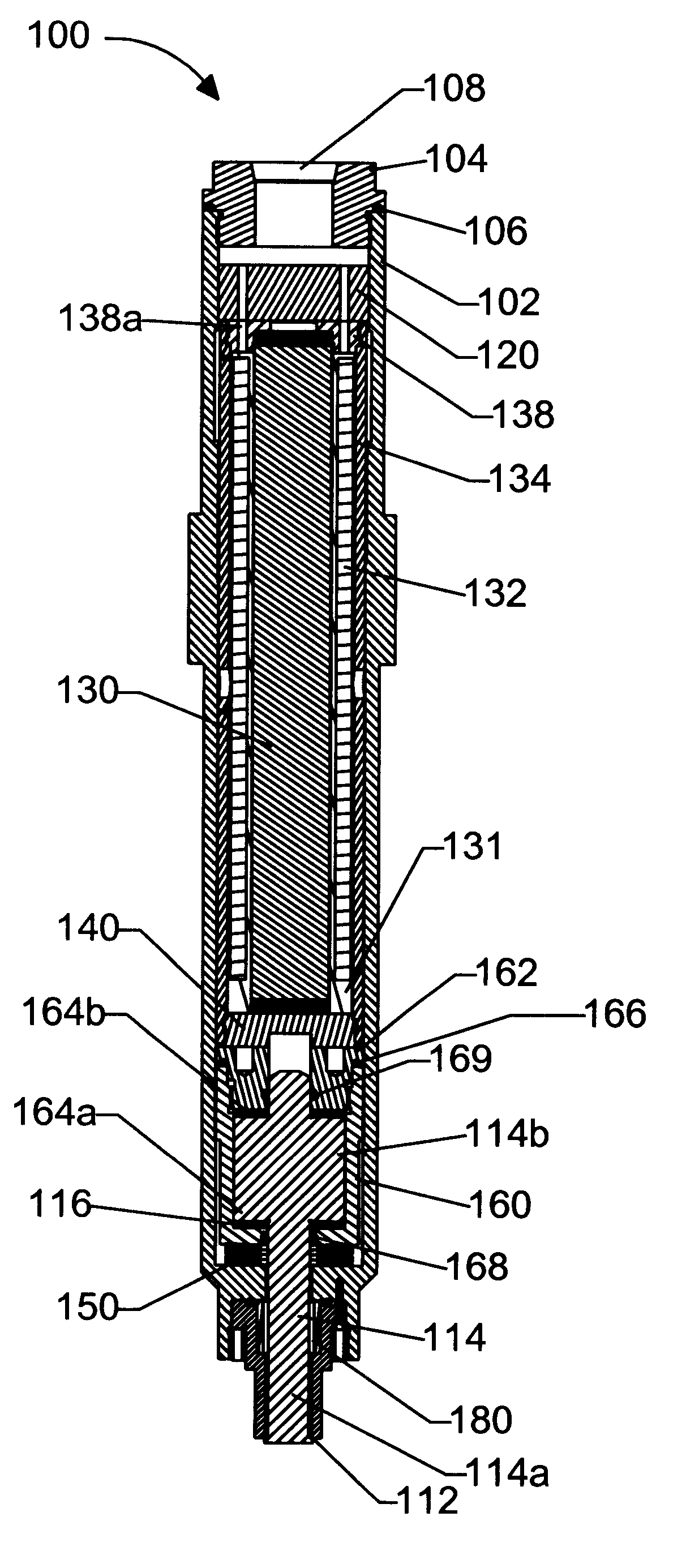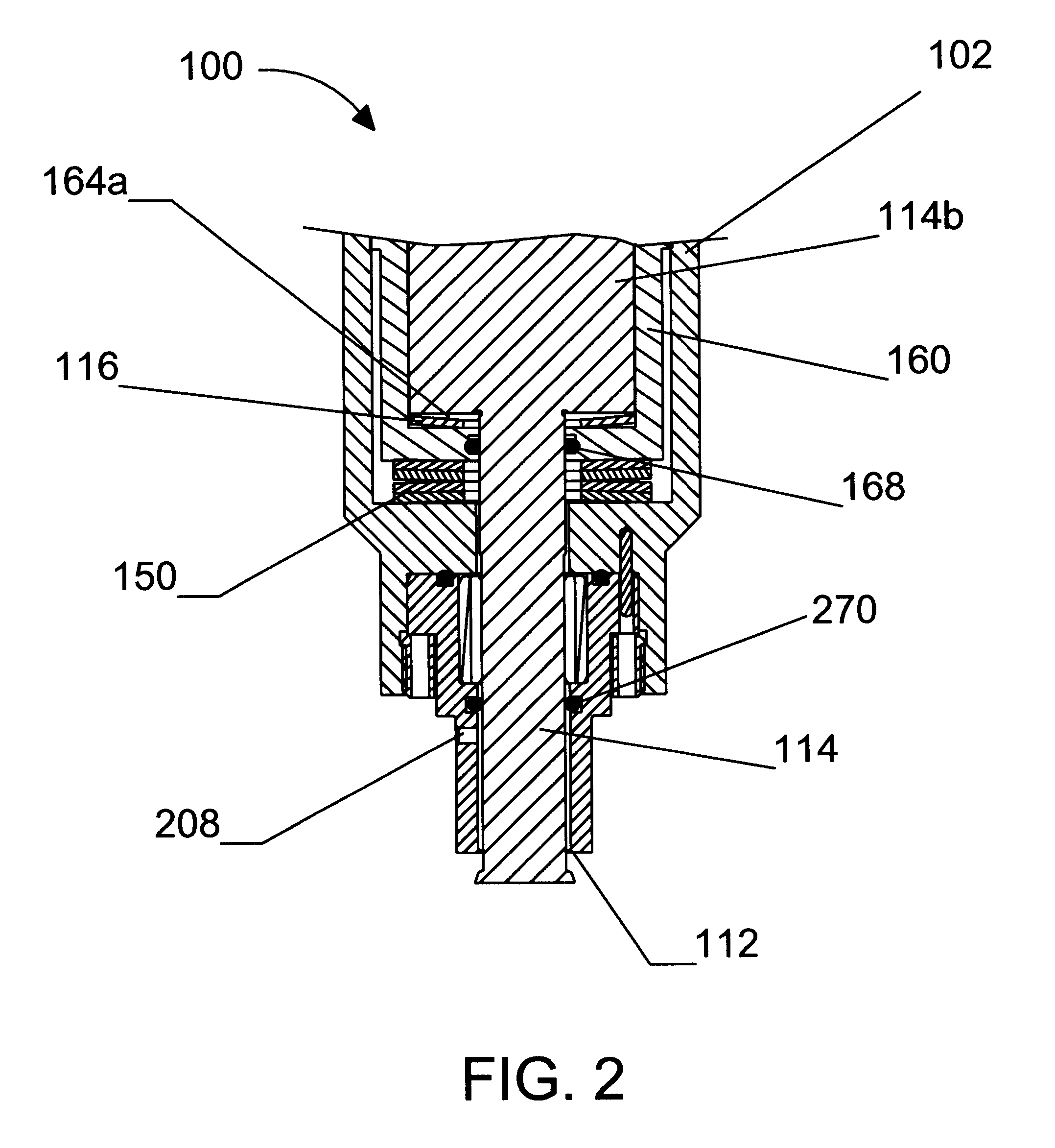Directly actuated injection valve
a technology of injection valve and actuator, which is applied in the direction of fuel injection pumps, machines/engines, electric control, etc., can solve the problems of high fuel pressure within and high pressure in the injection valve or injector, so as to reduce the load, reduce the wear of the valve seat, and reduce the effect of injection
- Summary
- Abstract
- Description
- Claims
- Application Information
AI Technical Summary
Benefits of technology
Problems solved by technology
Method used
Image
Examples
Embodiment Construction
FIGS. 1 and 3 show two different preferred embodiments of an outward opening directly actuated fuel injection valve for internal combustion engines. Opposed to a needle valve, which employs a needle that is retracted into the valve body to open the valve, an outward opening injection valve extends a valve member outward and away from the valve body to open the valve. To open an outward opening fuel injection valve for injecting fuel into an engine, a valve member is moved away from a valve seat and towards the combustion chamber.
Referring to FIGS. 1 and 2, injection valve 100 includes elongated valve housing 102 that cooperates with valve cap 104 to provide a fluidly sealed valve body. Seal 106 may be employed to ensure that the assembled valve body is fluid-tight. Valve cap 104 comprises inlet port 108 through which fuel enters the valve body. Valve housing 102 further comprises valve seat 112, which is better shown in FIG. 2, which shows an injection valve in the open position.
The...
PUM
 Login to View More
Login to View More Abstract
Description
Claims
Application Information
 Login to View More
Login to View More - R&D
- Intellectual Property
- Life Sciences
- Materials
- Tech Scout
- Unparalleled Data Quality
- Higher Quality Content
- 60% Fewer Hallucinations
Browse by: Latest US Patents, China's latest patents, Technical Efficacy Thesaurus, Application Domain, Technology Topic, Popular Technical Reports.
© 2025 PatSnap. All rights reserved.Legal|Privacy policy|Modern Slavery Act Transparency Statement|Sitemap|About US| Contact US: help@patsnap.com



